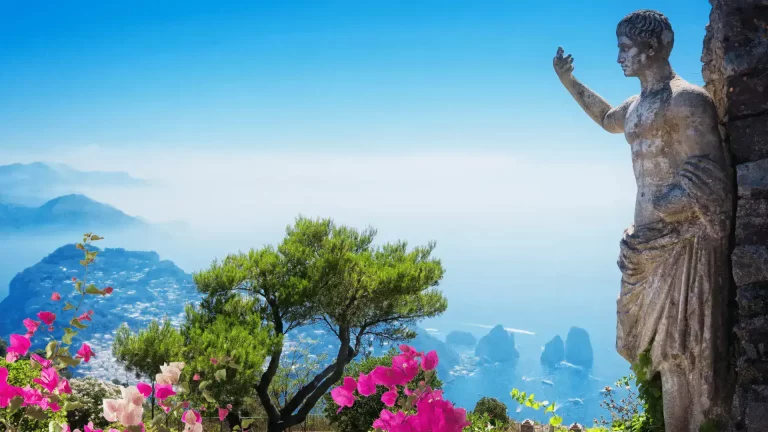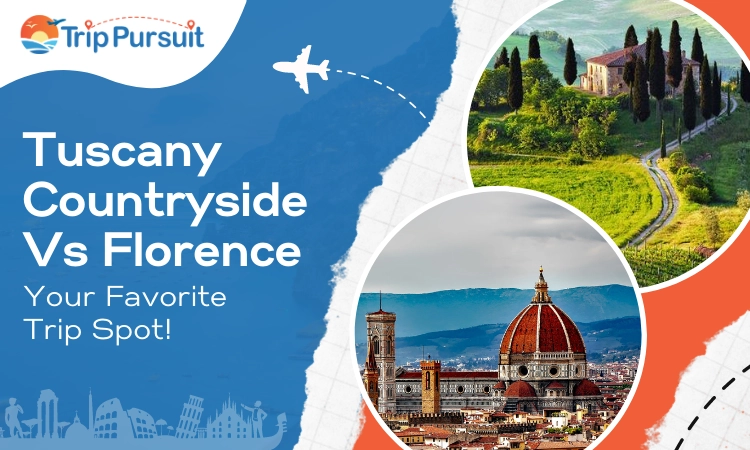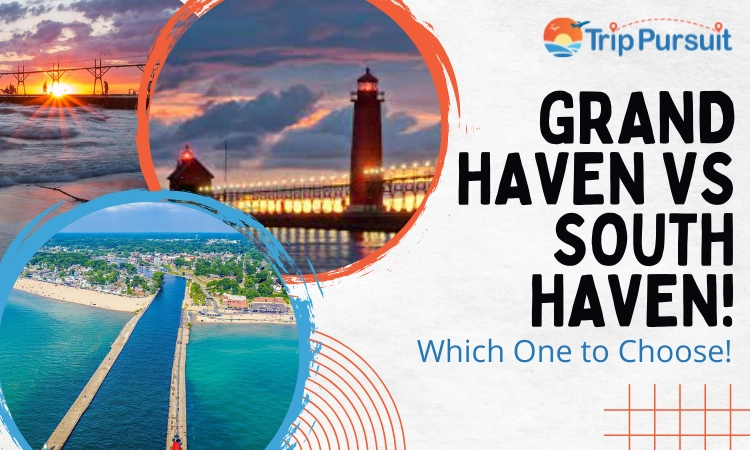7-Day Itinerary for Portugal Wine Tour: A Journey Through the Vineyards!
Portugal is a small country that packs a big punch when it comes to wine. With a long history of winemaking and a variety of regions producing unique flavors, it’s no wonder that wine tours have become a popular activity for visitors.
In our interview with Marina, a Portuguese wine Sommelier, she shares her insights on the best ways to experience the wine culture in Portugal. So, grab your passport, pack your bags and get ready to embark on an unforgettable wine journey across Portugal.
Additionally, if you want to hear directly from our guide Marina, listen to the entire podcast on youtube –
Wine Regions of Portugal
Portugal consists of 14 regions, each with their own unique characteristics and styles of wine. While some regions may be more well-known for their wine production than others, it is true that wine is produced throughout the country.
This is due to the fact that Portugal has a diverse range of microclimates and soil types, which allows for a wide variety of grape varieties to be grown and for different styles of wine to be produced. From the crisp white wines of Vinho Verde to the full-bodied reds of the Alentejo region there truly is a wine for everyone in Portugal.
Some of the famous wine regions of Portugal include Douro Valley known for its production of port wine, Vinho Verde known for its crisp, light-bodied white wines, Bairrada known for its production of red wines made from the Baga grape variety, Dao known for its production of elegant, age-worthy red wines and finally Alentejo famous for its full-bodied red wines.
These are just a few of the many wine regions in Portugal. Whether you’re a fan of fruity whites or full-bodied reds, there’s a wine region in Portugal that’s sure to impress.
Portugal is home to 250 types of wine-producing grapes that produce drinks like white wine, red wine, rosé and even brandy.
Bonus: 7-Days of Travel Itinerary of Santorini: Explore Santorini
When is the Best Time to Visit Portugal for Wine Tours?
In recent years Portugal has gained a lot of curious tourists looking for unique wine tours. But these wine tours cannot be enjoyed at their fullest throughout the year. In our interview with Marina, she mentioned that even though Portugal can be visited throughout the year, some months of the year aren’t particularly ideal for visiting the wineries of Portugal.
She recommends avoiding August since most Portuguese companies have holidays, which means that most places may be closed and the crowds may make it challenging to enjoy the beautiful nature. She also suggests skipping November through February for wine tours as the weather is quite unpredictable at that time.
So, in conclusion, the best time to visit Portugal for wine tours is between March and October (excluding August). During this time, the weather is warm and dry, making it the perfect climate for wine production. Additionally, many wineries offer tours and tastings during this time which makes it the ideal time to explore the wine regions of Portugal.
7-Day Itinerary for a Wine Tour in Portugal
Even though Portugal is a small country, it has many wine regions to explore. While talking to Marina it became quite clear that you need at least 5 trips to cover all the wine regions of Portugal.
However, if you’re on a time crunch you can visit one wine region at a time depending on your taste. Marina suggests five different trips that one can take, each focused on a different region of the country.
The first trip is centered around Lisbon and the southern part of Portugal covering the famous wineries of Alentejo. The second trip is focused on the central region of the country and includes visits to areas such as Bairrada, Dao and the tiny region of sparkling wines known as the Tower of Arroza.
The third trip is based in the northern region of the country, with Porto as the starting point. The fourth trip is focused on the island of Madeira and she suggests spending at least seven days there. Finally, the fifth trip is focused on the Azores, which Marina describes as a pure nature experience.
So, depending on your interests and where you land first, you can choose from any of these regions to explore.
When planning a trip to Portugal, it is best to start in the region where you will land. However, if you are a wine lover and have limited time it is advisable to focus on one or two regions to avoid spending too much time on the road.
Among all these regions Marina mainly focused on the wine tours surrounding Lisbon and Alentejo in our interview. She also didn’t mention any wineries or restaurants specifically. We did our research and included some of the best for you.
Marina also suggests that if you have more time on your hand you can cover the Douro valley wine tours. To visit the Douro Valley you need to first go to Porto from Lisbon which takes around 3 hours by car. After that, you can spend a night or two there to explore all the wineries that Douro Valley has to offer.
Interestingly enough you can also explore the Vinho Verde region when you reside in Porto.
Now, here’s a 7-day itinerary for wine tours surrounding Lisbon suggested by Marina on our Youtube, Itinerary Podcast.
Day 1 – Lisbon and Alentejo
For experiencing the wine tours surrounding Lisbon and Alentejo, Marina suggests landing in Lisbon and directly transferring to a hotel in Alentejo. It takes roughly around 1.5-2 hours to get to Alentejo from Lisbon.
You can either rent a car or go by train as per your wish. However, our recommendation is to rent a car for the entirety of your trip, as it will make traveling between different places much easier.
Spending at least 3-4 days in Alentejo is a must according to Marina. Without that, you cannot experience the Alentejo wine scene to its fullest she further implied.
After arriving in Alentejo check in and take some time to relax and settle in. Once you’re settled in your hotel, we recommend taking a tour of Herdade do Esporão in the afternoon for experiencing the Alentejo Portugal wine tour. The Herdade do Esporão is one of the most well-known wineries in the region.
Enjoy a tasting of their award-winning wines and learn about the winery’s history and production methods. After that return to your hotel and enjoy a relaxing evening at your hotel.
Alentejo is known for producing high-quality wines with a variety of grape varieties grown in the region. The most common red grape varieties in Alentejo are Trincadeira, Aragonês (also known as Tempranillo), Alicante Bouschet, and Touriga Nacional. For white wines, the most common grape varieties are Antão Vaz, Arinto, Roupeiro, and Alvarinho.
Red wines from Alentejo are typically full-bodied, with dark fruit flavors such as blackberry and black cherry and notes of spice and tobacco. They are known for their velvety texture and balanced acidity. White wines from Alentejo are typically dry, crisp, and refreshing, with flavors of citrus and tropical fruit.
What to Eat: For lunch, you can try the Michelin Star restaurant situated inside the L’AND Vineyards if you have the budget or you can just go for Venda Azul which is a budget-friendly restaurant with good Mediterranean food. For dinner, you can dip your toes into local cuisine and try Migas or Porco Preto.
Where to Stay: For a luxury, stay check out the L’And Vineyards, a five-star luxury resort with a winery, a spa and exclusive Sky View suites where you really can sleep under the stars. For a budget-friendly option check out the Concept Guest House and Casa Al’entejo.
Transportation: To travel from Lisbon to Alentejo you can either rent a car, take a train or bus or even book a private transfer from Lisbon to your destination in Alentejo.
A bonus tip from Marina: Try to buy train tickets earlier to get an almost 50% discount.
Cost: On average it should cost at least around €150 – €200 to get to Alentejo and stay the night there.
Day 2, 3 & 4 – Alentejo
Start the first full day in Alentejo with a hearty breakfast in your hotel or nearby restaurants. After that, we highly recommend taking a tour of João Portugal Ramos, a winery known for its innovative winemaking techniques.
Explore the vineyards and learn about the different grape varieties grown in the region. Enjoy a tasting of the winery’s wines and learn about the aging process.
In the afternoon, take some time to explore the historic city of Évora and its charming streets and monuments.
On the third day, begin with a tour of Adega da Cartuxa which is a winery located in the heart of Évora. This is one of the famous Évora portugal wine tours and we’ve seen multiple good reviews on it. Just like other wine tours enjoy a tasting of the winery’s wines and learn about the production process.
Alentejo is full of unique wine experiences. In the afternoon, you can head to Quinta do Quetzal for a picnic lunch among the vineyards. Embark on a tour of the winery and indulge in a wine-tasting experience, savoring the exquisite flavors of their wines.
For your last day at Alentejo, we recommend taking a tour of Herdade da Malhadinha Nova, a winery located in the Baixo Alentejo sub-region. It offers one of the best wine tours in Portugal.
One of the amazing things that you can do here is participating in the grape harvesting process. However, it’s not always available so make sure to call in beforehand if you want to experience that.
What to Eat: If you’re in the mood for Mediterranean cuisine then check out the Divinus restaurant. Besides that, you can also try Açorda and Sopa de Cação.
Where to Stay: We recommend staying at the Quinta da Comporta for an all-around experience, São Lourenço do Barrocal for an intimate experience and Convento do Espinheiro for a luxury stay. For affordable accommodations, you can find Airbnbs that start from as low as €54.
Transportation: Buses are a relatively affordable and convenient way to travel within and between cities in Alentejo. Rede Expressos and Eva Transportes are the two main bus companies operating in the region. Taxis are also widely available, but they can be more expensive than buses. Renting a car is a good option if you want to explore the more rural areas of Alentejo and have the flexibility to go where you want when you want. Major car rental companies such as Europcar and Hertz have offices in Alentejo’s major cities.
Cost: You need at least €130 – €170 per day for accommodation, food, transportation and wine tours. The price will increase depending on the type of tour you will be taking.
Day 5 & 6 – Lisbon
On day 5, arrive from Alentejo and settle in your accommodation in Lisbon. In the afternoon, visit one of the wine bars in the city, such as By the Wine or Garrafeira Nacional and enjoy a wine tasting.
You can learn about the different regions and grape varieties of Portugal while sipping on delicious wines. After that enjoy dinner at one of Lisbon’s many excellent restaurants, pairing your meal with a bottle of Portuguese wine. You can also go for affordable wine tours near Lisbon Portugal such as the 2-hour Lisbon sunset and wine sailing tour.
Marina briefly talked about taking wine tour cruises and how much of a surreal experience it is. Embark on a sunset cruise in Lisbon Harbor and experience the city from a unique perspective.
Take in the stunning views of Lisbon’s iconic landmarks and enjoy live commentary from your knowledgeable skipper. As you soak in the beautiful sunset, savor a delicious sample of Portuguese wine. This will be the perfect way to end your day in Lisbon with a memorable and relaxing experience on the water.
After that, if you fancy then you can visit one of the bars or nightclubs and party the night away. The Lisbon party scene is like no other. So, be sure to make good use of that.
For the next day, you can take a food and wine tour of Lisbon’s historic neighborhoods, such as Alfama or Bairro Alto. After that visit the local markets, bakeries, and restaurants, trying traditional Portuguese dishes and wines along the way. You can learn about the history and culture of Lisbon through its food and wine tour.
Some famous wines in Lisbon include Bucelas, Colares and Carcavelos. One of the unique things about the Colares wine that Marina mentioned was that the trees producing the grape still had their original roots.
During the early 1860s a bug-infested most of the vineyards of Europe. It stopped all the grape trees from producing grapes as they were not resistant to this bug. As a result, the vignerons started to cultivate trees using the roots taken from American grape trees (which were resistant to the bug). Most of the wines across Europe are cultivated this way.
However, only the Colares region produces its wine from trees that don’t have American roots. As a result, the wine produced from these trees encapsulates the original taste of the wine that was produced in the early days.
What to Eat: For lunch, we would recommend trying Bacalhao which is a salted cod dish or you can also try a hearty pork sandwich called Bifanas at O Trevo. Pair your lunch with a glass of Bucelas to complete the meal. For dinner, you can go to Tapas Bucho and try out the appetisers there. After that go to either Casa de India or Cervejaria Ramiro for a hearty meal. Lastly, you cannot skip famous Portuguese desserts like the Pastéis de Belém and Pastel de Nata.
Where to Stay: If you want to stay right at the heart of Lisbon and in a luxurious hotel, then you can opt for the Avenida Palace or the Ivens. A budget-friendly accommodation would be Hotel 1908. You can also opt for Airbnbs as they start from as low as €30.
Transportation: For transportation, Marina recommends renting a car. Renting a car is usually more convenient to travel across Lisbon. You can also get taxis or walk through the city as well.
Cost: You will require an estimated €170 – €190 at least per day depending on your choice of transportation, activity and accommodation. The cost will increase if you want to avail more luxurious tours.
Day 7 – Setúbal
Marina specifically mentioned that you cannot end your Lisbon wine tour without visiting the Setubal region. Setubal is particularly famous for the production of Moscatel de Setubal. That’s why many famous wine tours in Setúbal Portugal can be found.
It is made from the Muscat grape variety and is aged in oak barrels for several years. Moscatel de Setúbal is known for its rich, fruity flavor and caramel notes. It is often served as a dessert wine.
Marina mentioned that these wines are aged for more than 100 years. That’s why these also tend to cost a lot. People usually reserve these wines for celebrating special occasions.
On your last day in Portugal, go to Setubal from Lisbon. It usually takes around 40 minutes to reach there. After arriving, we recommend beginning your wine tour with a visit to the José Maria da Fonseca winery which is one of the oldest wineries in Portugal. It is also one of the luxury wine tours of portugal.
As always take a tour of the winery and learn about the winemaking process while enjoying the beautiful surroundings of the vineyards. Enjoy a wine tasting of their best wines including the famous Moscatel de Setubal.
If you’re going to Setubal, then definitely try to bring some extra funds to taste the Moscatel de Setubal. You have to try this special wine at least once in your life.
Grab a quick lunch and then in the afternoon visit the Bacalhoa Palace and Wine Estate which happens to be a stunning 15th-century estate with a winery and art museum. While you’re at it take a tour of the estate’s vineyards and winery followed by a tasting of their best wines including their signature red blend, Bacalhôa.
For dinner, visit a local restaurant and indulge in delicious Portuguese cuisine paired with wines from the Setubal region. Following your dinner, take a leisurely stroll along the Setubal waterfront relishing the picturesque sights of the Sado River and the illuminated cityscape.
What to Eat: You cannot go to Setubal and not eat the infamous Choco Frito which is fried cuttlefish served with potatoes. Make sure to try Azeitão which is a semi-soft cheese made from unpasteurized sheep milk paired with the Muscatel de Setubal wine.
Transportation: You can rent a car, or take a train or bus to travel from Lisbon to Setúbal. Within Setubal, you can cover most distances by walking and sometimes you can take a taxi as well.
Cost: Since you will not be residing in Setubal, you can expect to spend on average €80 – €100 on your day trip to Setubal.
What Food Pairings Work the Best with Portugese Wine?
In our interview with Marina, she said, “The wine world cannot exist without food” and we cannot agree more. She also added that local foods pair best with local wines. So, definitely try to eat the local foods with the wine.
Portuguese cuisine is known for its bold and diverse flavors which make it an excellent pairing partner for Portuguese wines. Here are some of the best food pairings for Portuguese wines that we think you should must try:
Red meat: Portuguese red wines from Douro and Alentejo pair well with red meat dishes such as grilled steak, beef stew and lamb. These wines have robust tannins and a full body that complements the rich flavors of the meat.
Seafood: Portugal is known for its seafood and its white wines from Vinho Verde and Alvarinho pair perfectly with dishes like grilled sardines, codfish and octopus. These wines have a crisp acidity and a light body that balances the flavors of the seafood.
Cheese: Portuguese wines also pair well with a variety of cheeses such as the famous Queijo da Serra from the Serra da Estrela region. Pair a red wine with a sharp cheese such as a strong cheddar or gouda or a white wine with a creamy cheese like brie or camembert. There are specific tours for wine and cheese tours in portugal.
Spicy dishes: Portuguese wines, such as Vinho Verde and Bairrada pair well with spicy dishes like peri-peri chicken (also known as piri-piri) or shrimp. The acidity of the wine can help to balance out the heat of the spices.
Pastries and desserts: Portugal is also known for its delicious pastries and desserts such as pastel de nata and bolo de bolacha. Pair these sweet treats with a glass of port or a sweet Madeira wine.
These are just a few examples of the many food pairings that work well with Portuguese wines. You can experiment with different flavors and combinations to discover your own perfect pairing.
Is Portugal Safe for Solo Travellers?
According to Marina, Portugal is generally a safe destination for solo travelers. Because of its low crime rate, Portugal has become a popular destination for solo travellers to visit. She also mentioned in our interview how friendly and welcoming the Portuguese people are to tourists.
However, it’s always important to take basic precautions to ensure your safety when traveling alone. These include staying aware of your surroundings, avoiding isolated areas at night and keeping your valuables secure.
As with any destination, it’s a good idea to research the specific area you’ll be visiting and any potential risks or concerns.
Is English Spoken in Portugal?
English is widely spoken in Portugal, especially in tourist areas, major cities and among the younger generation. Having said that, it’s always a good idea to learn some basic Portuguese phrases to help with communication and show respect for the local culture.
Where to Shop in Lisbon?
Lisbon is a very popular shopping district. There are several places to shop for souvenirs, fashion and other items here. Some of the popular shopping areas are:
Baixa-Chiado: This area is home to many traditional Portuguese shops as well as international brands. It’s a great place to shop for souvenirs, fashion and accessories.
Avenida da Liberdade: This elegant avenue is lined with high-end fashion stores such as Prada, Louis Vuitton and Gucci.
Amoreiras Shopping Center: This is one of the largest shopping centers in Lisbon with over 250 shops, restaurants and cinemas. You can find pretty much everything here.
Besides these, Marina also let us know that Portugal is known for its leather and cork products. The country produces a wide range of leather products, including bags, backpacks, wallets and shoes.
Cork is also widely used to produce bags, wallets and even clothing all made with eco-friendly materials. Portugal is also known for its fabrics and many factories in the north of the country produce high-quality fabrics.
So, to get good quality fabrics or leather products definitely try to shop from the many stores that Portugal has to offer.
What is the Nightlife Like in Portugal?
According to Marina, Portuguese nightlife is lively and active, especially in big cities like Lisbon and Porto. In Lisbon, the Bairro Alto neighborhood is famous for its bars and clubs that stay open till 2 AM. After that, visitors can move to a nightclub to party till 6 AM.
However, in areas such as Alentejo, there isn’t a strong presence of nightlife. Alentejo is known for its relaxed and laid-back lifestyle, and the nightlife in the region reflects this. So, if you want to experience active nightlife then you’d have a better time visiting the nightclubs in Lisbon and Porto.
Common Misconceptions about Wine Tours in Portugal
Our interview with Marina was very insightful. We got to know some of the exclusive details regarding wine tours in Portugal. She also cleared a lot of popular misconceptions regarding the wines and regions where it is produced.
We were the most surprised when she mentioned that Vinho Verde is a region and not a wine. Not only that, the wine isn’t even green. It’s rather a white wine that is light, fruity, sparkly and cheap. For the majority of our lifetime, we used to think Vinho Verde is a green wine as the name suggests.
One of the other misconceptions that people may have is that they may assume that a wine tour in Portugal will be too expensive. However, that is simply not the case. There are many affordable options available and with careful planning and research, it is possible to enjoy a fantastic wine tour without breaking the bank.
Lastly, some people may think that a wine tour in Portugal is only for wine experts. This is not the case at all. Whether you are a seasoned wine connoisseur or simply someone who enjoys a good glass of wine, a wine tour in Portugal is an excellent way to explore the country’s culture, history and of course, wine.
Expert Take on Transport, Accommodation and Budget
Marina guided us through the entire transportation, accommodation and budget for a 7-day itinerary for wine tours in Portugal. Here is an estimation and breakdown of everything you need to know-
Accommodation
The cost of accommodation could fluctuate based on the site and the facilities offered. There are super fancy hotels ranging from 700 euros to even 1000+ euros. There are also mid-tier and budget-friendly options that can range from anywhere between 100-300 euros. The cheapest option of accommodation has to be Airbnbs as it starts from as low as 30 euros per night.
Transportation
There are several transportation options to get around Portugal that includes buses, trains, taxis and rental cars. The most common and affordable means of transportation is by bus or train, which connects most cities and towns throughout the country. Buses are generally cheaper than trains but trains are faster and more comfortable. Taxis are also available but they can be expensive, especially for longer journeys.
Another option is to rent a car which gives you the freedom to explore the country at your own pace. However, be aware that some areas of Portugal particularly the historic centers of many cities are not accessible by car. Additionally, parking in some cities can be difficult and expensive.
Budget
Marina did not give us a specific answer regarding the exact budget needed for a 7-day itinerary as prices change from time to time. However, she mentioned that it is possible to plan a trip to Portugal on a variety of budgets. She suggests that visitors can easily travel between the different regions of the country by car, making it possible to see a lot without spending too much money.
Overall, considering all the aspects of the wine tours, a 7-day itinerary in Portugal can cost you at least around €1500 – €2500 based on your choices regarding lodging, meals, means of transportation and personal preferences. Miscellaneous expenses and shopping costs are not part of this estimate.
Tips from the Expert to Fully Enjoy the Wine Tours of Portugal
- Wine tours and tastings can fill up quickly, especially during peak tourist seasons. Be sure to book your tours and tastings in advance to avoid disappointment.
- Many wineries require visitors to dress appropriately, so be sure to check the dress code before you go. Additionally, wear comfortable shoes as some wineries may require a fair amount of walking.
- While many wineries in Portugal have English-speaking staff it’s always a good idea to learn some basic Portuguese phrases. This will help you communicate with locals and show your respect for their culture.
- Portugal has strict laws against drinking and driving. If you plan on drinking during your wine tour make sure you have a designated driver or use public transportation.
- Start early in the day for wine tastings to avoid large crowds.
- Wine tastings can be dehydrating, so be sure to drink plenty of water between tastings.
- When visiting wineries, be respectful of the winery’s rules and regulations. This may include not touching the wine bottles or asking for permission before taking photos.
- For a more intimate and genuine experience consider visiting smaller wineries.
These are just some of the tips that you must know before visiting Portugal for a wine tour. For more help, you can contact our guest Marina regarding wine tours in Portugal.
Final Thoughts
Portugal wine tour is an experience like no other. From the picturesque landscapes to the delicious food and wine pairings, Portugal has something to offer every wine enthusiast. With 14 unique wine regions and a long history of winemaking, Portugal is a hidden gem waiting to be explored.
Whether you are a seasoned wine connoisseur or a beginner, a wine tour in Portugal is sure to leave you with unforgettable memories and a deeper appreciation for this beautiful country’s rich wine culture.
So, what are you waiting for? Start planning your Portugal wine tour today with Marina and discover the magic of this charming country.







